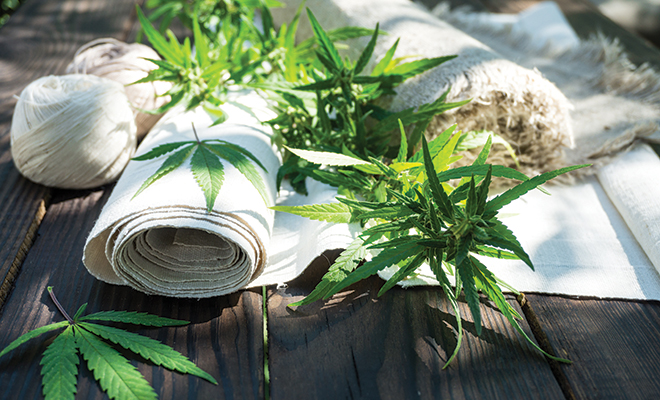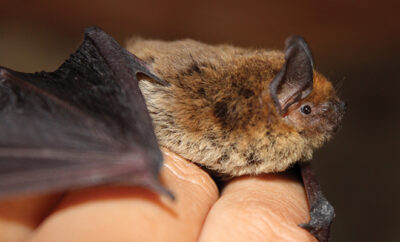
A New Look at Fabrics
For decades, the fashion industry has relied on petroleum and plastic-based textiles such as polyester, nylon, acrylic and spandex for everything from fitness wear to evening gowns. Although these fabrics are easy to wear and care for, their production often leads to pollution.
A new level of environmental awareness is driving a sustainable makeover in many areas of the textile industry. Surprising new sources for natural fibers are being discovered and used for products that soon may be appearing in a store near you.
Piñatex®
It might sound impossible to create a leather substitute from pineapple leaves, but that’s exactly what London-based company Ananas Anam has done. Piñatex is a non-woven textile made from leaves that are a byproduct from harvesting pineapples. This 100 percent vegan substitute for leather is soft, flexible, strong and breathable, perfect for both classic and innovative clothing, shoes and accessories
S.Café®
The coffee drinkers of the world create a mountain of coffee grounds every single day. A company called Singtex has come up with a way to use coffee grounds to make a yarn filament called S.Café. This new type of yarn dries 200 times faster than cotton, offers five times more UV protection and has the odor-absorbing properties that coffee grounds are known for. Since launching in 2009, Singtex has developed bedding, underwear and a variety of other products using S.Café yarn.
AlgiKnit
A New York biomaterials research company named AlgiKnit has developed a new yarn made from seaweed, kelp and algae, which are among the fastest-growing and most renewable organisms on earth. The bio polymer yarn is strong and flexible enough to be used in textile production and it can be recycled when discarded. AlgiKnit yarn strands are customizable for use in a wide range of fashion products, from shoes to handbags.
Orange Fiber
This patented material is made in Italy from citrus juice byproducts that would normally be wasted. It begins with a silk-like cellulose yarn that can be used by itself or blended with other materials. The Salvatore Ferragamo fashion house recently created a capsule collection featuring soft, breezy pieces made with Orange Fiber fabrics. Designer Salvatore Ferragamo was known for using paper, raffia, hemp and other natural materials during leather shortages following World War II, so his fashion house is following in that tradition.
VegeaTextile
Vegea is another Italian company leading the way in sustainable textiles. The company has developed a vegan-based material from the skins, seeds and stalks of wine grapes that can be used as a replacement for animal-and fossil-derived products in fashion, automotive and transportation applications. To showcase the uses of VegeaTextile, the company created a trendy capsule fashion collection that included handbags, fringed garments, sneakers and stiletto shoes.
Lab-Made Spider Silk
Spider silk is one of the softest and strongest fibers found in nature, but the difficulty of harvesting it from silkworms makes it one of the most expensive fibers in the world. A California company named Bolt Threads has created an artificial spider silk it calls Microsilk within its lab. Unlike current low-cost silk replacements made from environment-threatening polyester, Microsilk is sustainable and biodegradable. The product has been in development for almost a decade and initially it was more expensive to produce than natural silk, but production costs are going down and it will soon debut in a line of sweaters and bags.
Mylo™
Bolt Threads has also developed a leather replacement from mycelium, the underground root structure of mushrooms. The Mylo textile is created from billions of mycelium cells that are grown in a three-dimensional network and then compressed into a leather-like material.
Corn Shoes
Last summer, footwear maker Reebok introduced a sustainable sneaker with an upper made from organic cotton and a sole made from corn. The eco-friendly shoes retail for $95, about the same price as the company’s classic sneaker. According to CBS News, more than 20 billion pairs of shoes are produced annually worldwide and about 300 million make their way into landfills. Although the new shoes are sustainably produced, they’re not fully biodegradable. Still, Reebok has taken a step in the right direction.
Hemp
This versatile natural fiber is a durable and resilient alternative to cotton and linen. Unlike cotton, which requires vast quantities of water and is responsible for a quarter of global insecticides sales, the hemp plant grows quickly with very little water and without the use of pesticides or synthetic fertilizers. It’s also biodegradable. Although cultivation of hemp in the U.S. has been limited due to the fact that it originates from Cannabis Sativa, the same plant that produces marijuana, it’s a legal crop in China. As sustainability becomes more important to the fashion industry, we could see a surge in hemp clothing products in the future. ■
Sources: fashionunited.com, forbes.com and cbsnews.com.







